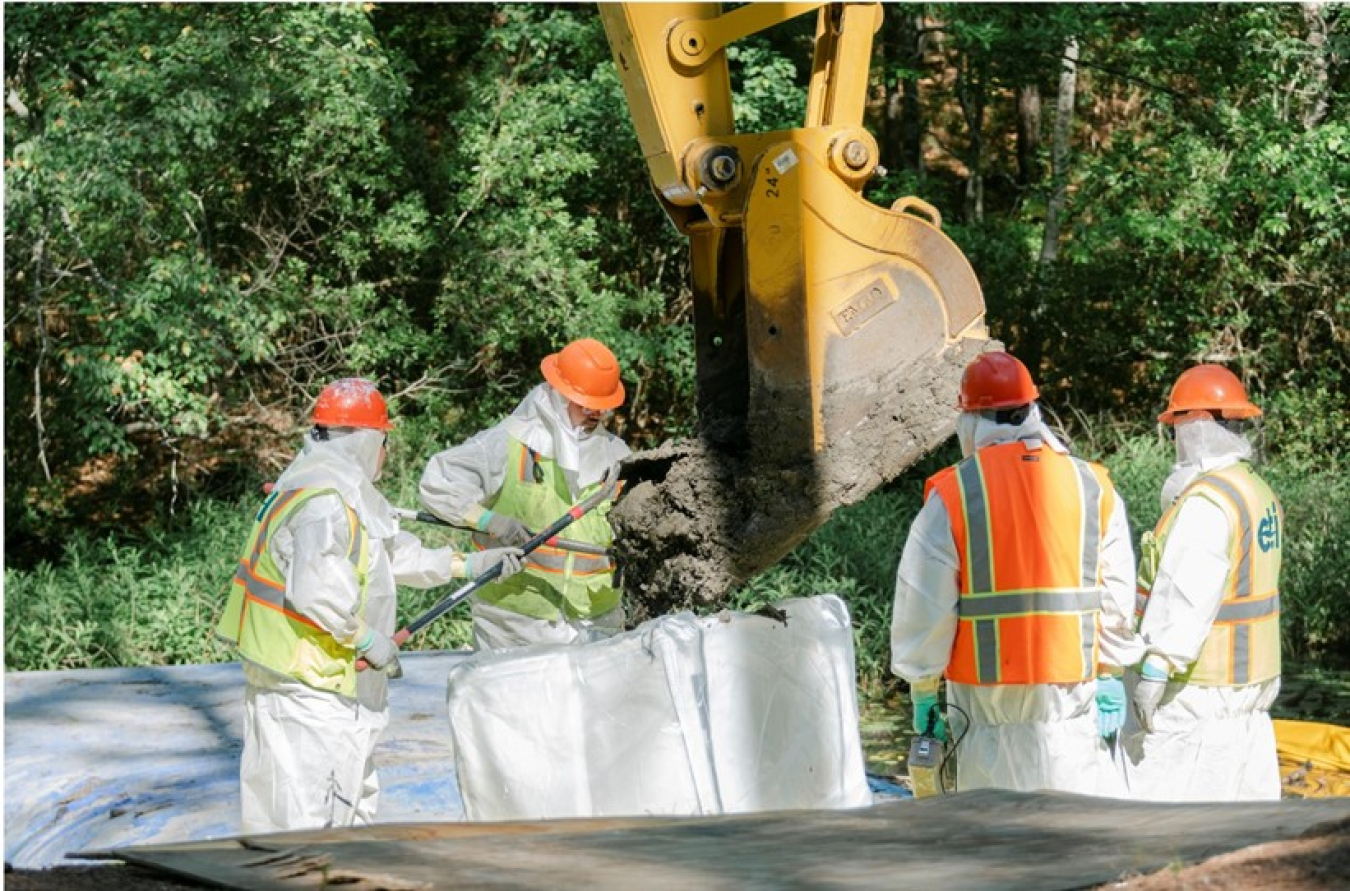EM and a contractor at the Savannah River Site (SRS) recently finished the cleanup of a discharge canal, a project that successfully completes environmental remediation of the Lower Three Runs stream system.
Office of Environmental Management
July 25, 2023
AIKEN, S.C. – EM and a contractor at the Savannah River Site (SRS) recently finished the cleanup of a discharge canal, a project that successfully completes environmental remediation of the Lower Three Runs stream system.
Lower Three Runs is composed of several ponds and canal systems that received thermal discharges from cooling water systems associated with the site’s P and R reactors, which were shut down in the 1980s and decommissioned by EM in 2011. The discharges included radionuclides that may pose a threat to human health, and mercury pumped from the Savannah River also posed a risk to the environment.
Earlier this year, DOE awarded the Lower Three Runs Final Remedial Decision Team members with the Secretary of Energy Achievement Award for their dedication to securing the record of decision remedial agreement for the Lower Three Runs stream system at the site. Their efforts culminated in substantial cost savings and the protection of approximately 30 miles of canals and streams and over 3,000 acres of aquatic habitat. Their approach to the project can be applied to other stream systems at the site and help achieve EM priorities of legacy cleanup and environmental stewardship.
“It’s been an honor to be an integral part of the Lower Three Runs project, which is now the first fully remediated closure site at Savannah River Site,” said Juana Maddox, a project manager with Savannah River Nuclear Solutions (SRNS) Environmental Compliance & Area Completion Projects. “Successfully completing this project within a year without incident speaks to our team’s willingness to collaborate and rise to the occasion.”
To safely isolate the identified area for cleanup, crews placed large aqua barriers, blocking off the area with higher concentrations of the contaminants. They pumped out the water from the contaminated area, exposing the underlying sediment.
Workers then treated the sediment with a drying agent and excavated it to approximately 1 foot deep. They safely discarded the excavated sediment in sacks and disposed of it as low-level waste at SRS. Crews removed about 21 cubic yards of sediment from the 500-square-foot excavation area.
“The planning and field implementation on this project was very well orchestrated,” said Susan Blas, fellow scientist with SRNS Environmental Compliance & Area Completion Projects. “As with any field deployment, there were aspects that were not anticipated. The team did an excellent job suspending work when unexpected conditions arose, meeting at the field site where all variables were discussed, and a safe alternative was agreed upon by the entire team.”
SRNS subcontractor CTI & Associates, a small construction and remediation company based in Michigan, performed the field work for the project. CTI is one of several businesses that has partnered with SRS through its successful mentor-protégé program.
The U.S. Environmental Protection Agency and the South Carolina Department of Health and Environmental Control approved the project.
“They say it takes a village, which was proven to be true during this field project,” Blas said. “The expertise applied to this type of project makes all the difference.”
To receive the latest news and updates about the Office of Environmental Management, submit your e-mail address.

